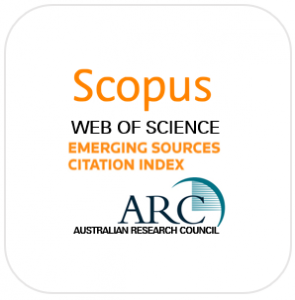Home » Announcement
Category Archives: Announcement
In Memoriam: Larisa Efimova
It is with great sadness that we learn today of the passing of Larisa Efimova, Professor of Asian and African Studies at Moscow State Institute of International Relations, Russia. An expert on Southeast Asian Studies, Prof. Efimova is well-known for her significant contributions to the field of Indonesian politics as well as Indonesian-Russian relations. An esteemed member of IJAPS’ editorial board, Prof. Efimova has contributed to and supported the journal for many years. She will be missed. We at IJAPS wish to convey our deepest condolences to her family, friends, colleagues, and students. May she rest in peace.
Call for Paper: The Sixth International Conference on Tainan Studies, 2020 Art and Material Culture in the Tainan Area
Please note that IJAPS merely publishes this announcement. For inquiries regarding contents of the announcement, please liaise using contact details provided below.
CONFERENCE TOPIC
Tainan is spontaneously seen as a place with a rich tangible and intangible cultural heritage. This has its roots in the history of lowland indigenous people and Han immigration, but also results from previous trade relations with the outside world and the different functions that successive authorities on the island attributed to this locus. Long-lasting Taiwanese capital of traditional artistic expressions and know-hows, Tainan has also become the chief-place of their preservation and research on restoration, while making them resources for the cultural promotion of the region.
In addition to the historical buildings and sites attached to highly contrasted periods of the past, showing remarkable and varied architectural styles, the city and the hinterland count myriads of temples that are the repositories of age-old material culture, as well as innumerable religious celebrations that form the crucible of intangible culture; both facets constitute the pillars that support their transmission and stimulate a traditional aesthetic with flamboyant aspects, engaging all the senses.
Tainan has also been keen to create a dynamic around new institutions such as Tainan Art Museums I & II, the redeployed Chimei Museum, art galleries, art exhibitions, and to welcome more and more public concerts, dance and theatre performances. A number of performing arts troupes have a sustained local action. Besides, several cultural parks have established artist residencies where works of art rooted in their environment are born, accomplished by Taiwanese or foreign artists who have come to meet the inhabitants and have drawn from their life stories. On the other side, the inhabitants have always been strongly attachment to their region and are aware of what it represents for Taiwan’s history and culture.
This leads us to consider cultural and artistic life in the relation between the center and the periphery (and this is all the more interesting because Tainan has also been a center in the past), between the north and south of the island and, locally, between the city and the countryside. And moreover to tackle the subjects of cultural roots, the affirmation of identity through art, and aesthetics as a capital of distinction.
Aside from encouraging the illustration and analysis of this artistic, creative and traditional abundance of Tainan, this conference also aims to invite researchers to address a broader theme, concerning ‘art’ in its relationship to ‘place’, based on what we see in Tainan, or starting from Tainanese experiences in comparison with those of other places, including overseas. In this regard, the following questions can be asked: What is the relationship that artists and works of art maintain with the spaces they invest? How is a territory embodied by artistic expression? Can a work of art become a “lieu de mémoire”? What makes the sensory, emotional or ideal anchoring in a particular place a unique experience and how is it projected in the field of art?
CONTENT OF PRESENTATIONS
The presentations should be in line with Taiwan studies in the humanities and social sciences. All periods are concerned. The fields considered are: visual arts in the broadest sense, including film and architecture, applied art and handicraft, music, performing arts, live performances. Poetry and literature, which alone would deserve a symposium, are not included here.
Possible interests and orientations for papers might include:
- Museums, public or private collections, galleries, exhibitions;
- Architecture in the city, in the countryside, monuments, sites and parks;
- Material culture and restoration, know-hows and skills;
- Music and performing arts: traditional, past, present;
- Temples: architecture and decoration, votive statuary, objects;
- Aesthetic arrangements of rituals (objects, costumes, gestures, voice-music-sounds);
- Content, graphic depiction and aesthetics on ancient maps and historical illustrations;
- The new place of art in the public space of Tainan (public sculptures, installations, “painted villages”, living spaces embellished by local residents, routes performances and outdoor performances, etc.);
- Tainan’s artist residencies: creation, interactions, works of art, exhibitions;
- Tainan’s place in Taiwan’s visual art, art history and art criticism;
- Art and identity (local, ethnic, national) from Tainan’s standpoint.
CONFERENCE INFORMATION
Dates and venue of the conference:
Dates: October 17-18, 2020 (Saturday and Sunday)
Venue: The National Center for Research & Preservation of Cultural Properties (Ministry of culture, Bureau of Cultural Heritage) B1 International Conference Hall (No. 1-1, Zhongzheng Rd., West Central Dist., Tainan City 700, Taiwan)
Abstract submission due on February 23, 2020.
Please submit by the deadline a tentative paper title and a 350-word abstract (English) or a 500-word abstract (Chinese) and 5 keywords, as well as a copy of your curriculum vitae. Proposals will be evaluated by the Conference planning committee.
- For accepted proposals, full papers will be due on August 31, 2020.
- Languages of the conference and financial support:
- The abstract and paper can be written in either English or Chinese. The languages of the conference will be Chinese and English.
- Travel costs and living expenses during the conference will be covered by the organizers.
CONTACT
Please send your submission and questions to:
WEN Sheng-Chih 溫勝智 (ICTAHR’s scientific assistant)
E-mail: ic.tahr@gmail.com
Tel: 886 (0)6 7212338 or 886 (0)6 6324453
No 245, Liu-an Village, Jiali District, Tainan City, 72242, Taiwan.
ORGANIZATION
Organizers: The International Center for Tainan Area Humanities and Social Sciences Research (ICTAHR) & The Cultural Affairs Bureau of Tainan City Government
Co-organizer: Bureau of Cultural Heritage of the Ministry of Culture (The National Center for Research and Preservation of Cultural Properties)
Joint organizers: College of Liberal Arts (National Chen Kung University) &
Department of Art History (Tainan National University of the Arts).
Conference coordinators:
- Fiorella Allio (艾茉莉) (CNRS, France / ICTAHR, Tainan)
- Yen Ting-yu (ICTAHR, Tainan)
IJAPS China Series | China Rising: Issues and Challenges for the Asia Pacific Realm
EAST ASIA THRUST 2016-2018 | IJAPS CHINA RISING SERIES (ICRS)
The Phenomenon
The People’s Republic of China (PRC), once referred as Red China and commonly regarded as a threat to both its immediate neighbours and to the Western world consequent of the Cold War scenario, has long shed such negativity since the last quarter of the twentieth century. In the contemporary context China appears to be the place to be whether for a visitor or a tourist, a culture traveller, or for an entrepreneur, a manufacturer, a corporate executive, a banker, policy-makers of multinationals are all seriously looking towards the mainland of “a quarter of mankind” for profitable enterprises, business opportunities and/or expansive markets. An exodus of manufacturers from electronics to toys, fashion houses to sporting goods, and a host of other consumer items of present-day luxuries and consumables are moving house to tap the affordable Chinese labour pool.
China, an economic powerhouse that since the last decade had surpassed the recession stagnated Japanese economy, is currently in the second decade of the twenty-first century, only economy next in size and generating capacity than that of the United States. On the political arena, Beijing is fast assuming an active and increasingly pivotal role, wielding its presence at strategic intervals to maximise its colossal effect on world affairs. The current Chinese leaders of President Xi Jinping and Premier Li Keqiang are both popular from within and from without. Chinese diplomacy on the world stage in the last decade has been carefully nurtured and the present leadership with their own expertise in negotiations and cultivating relations with foreign counterparts is gaining support and friends for Beijing. Moreover China’s adoption of a non-quid pro quo principle in extending development aid and exporting expertise are favourable to most Asian and African nations hitherto not entirely tolerant of the paternalistic stance adopted by Western democracies when dispensing funds and technical assistance. The Confucian Institute, China’s equivalent to the British Council, is promoting, cultivating and spreading Chinese goodwill and cultural influences throughout the world consistent with Beijing’s stance in reaching out to friends across continents. The nouveau rich amongst the mainland Chinese and the liberal access to travel abroad witnessed hordes of them in Europe and North America, Southeast Asia, Australasia, and in neighbouring South Korea and Japan.
What then are the implications and the effects on the Asia Pacific region as a whole, and/or the impact of individual nation-states consequent of recent developments on the Chinese mainland? In exploring this phenomenon of China’s ascendancy it is prudent to examine and evaluate through a multidisciplinary prism, viz. adopting the approaches and perspectives of a host of academic disciplines: sociology, anthropology, history, political science, economics, the arts, media, conflict resolution, literature and language, education, tourism, international relations, and comparative religions. Tapping from the various disciplines would enable us to further understand issues and ascertain the challenges for the Asia Pacific realm with the rise of China. The ways to address the issues and overcome the challenges should be the crux of any scholarly paper.
AN INVITATION
In this connection the International Journal of Asia Pacific Studies (IJAPS) would like to extend an invitation to scholars from diverse disciplines to contribute a paper in their area of specialisation to this Series.
GUIDELINES
Individual Manuscript
Contributed manuscript should keep within the word count of between 8,000 and 10,000, inclusive of notes, references, appendices, illustrations, etc. Submitted manuscript should comprise an Abstract (max. 200 words) and Keywords (max. 5 words), and Text that has been prepared according to the prescribed journal house-style.
Aforesaid Invitation notwithstanding all submitted manuscripts will undergo the normal double-blind peer review process.
Guest Editor
In a themed issue (consisting a set of between 5 and 7 thematic papers), a Guest Editor (GE) will be identified and appointed by IJAPS. Potential GEs are to provide his/her curriculum vitae for perusal and approval by IJAPS Editor-in-Chief, together with biodata of identified contributors indicating ability/authority as author for their respective papers.
IJAPS Editorial Board represented by the Editor-in-Chief or an appointed representative (a member of the IJAPS Editorial Board) will work closely with the GE in the matter of the selection of reviewers, attending to the reviewers’ report (comments, recommendations, etc.), and take the decision for final approval. Once approved, GE will attend to the details of proofreading (1st reading) and to ensure the papers are formatted to IJAPS house-style. Two GEs are also possible. (Note: The candidate for GE needs to be a scholar of international standing in his/her field for it will lend immense credibility to the published papers and for IJAPS.)
All articles to be submitted by the GE for publication must have gone through peer review process which is coordinated by the GE. The GE is to keep record of the review report and submit them to the journal for record purpose.
The GE is to ensure that the selected contributors or a majority of contributors do not come from one single institution. Preferably, and if possible, contributors to come from various disciplines, a gender balance, institutions/universities, and countries/continents are much appreciated to reflect the diversity of scholarship.
DEADLINES
Interested Authors need to submit a draft Abstract (max. 200 words) and Keywords (max. 5 words). Only Authors of approved Abstracts should proceed with the manuscript.
Submitted manuscript should be forwarded in electronic format (Microsoft Word) within a window of 6 and 8 months following approval of Abstract. All submitted manuscripts shall go through a double blind peer review that might involve 2 or 3 reviewers, revisions, re-evaluation, etc., a lengthy process.
Currently, we are accepting abstracts.
INQUIRIES
For queries, please refer to:
Professor Ann Heylen (aheylen2[at]gmail.com)
National Taiwan Normal University, Taiwan
Call for Abstracts: Aspirations of Young Adults in Urban Asia
Call for Abstracts: Aspirations of Young Adults in Urban Asia.
Eds. Kenneth Finis (Macquarie University Sydney), Désirée Remmert European Research Center on Contemporary Taiwan), and Mariske Westendorp (Radboud University Nijmegen).
This is a Call for Abstracts to contribute to an ethnographically-informed edited volume on the aspirations of youth and young adults in urban Asia (target publication: 2019). We are particularly interested in contributions from early career scholars. As our aim is to make this edited volume to go beyond Western-centric appraisals and present a truly global portrait, we particularly encourage local scholars from Asian communities to contribute.
Download the full brochure here.
Note: IJAPS provides the news platform for this Call for Abstracts but does not organise the event/publication. Any inquiries pertaining this Call for Abstracts should be directed to the the contact as provided in the brochure.
Happy New Year. Some Interesting Recaps
The International Journal of Asia Pacific Studies (IJAPS) would like to wish our readers many happy new year. May 2017 bring more prosperity to everyone.
Here are some interesting recaps throughout the year 2016 for IJAPS:
Publications
We have published three timely publications: two regular issues (15 January and 15 July) and a special issue on Bugis Orality and Writing (15 September) guest-edited by Stephen C. Druce of Universiti Brunei Darussalam.
Altogether, 20 articles were published in 2016.
Most Downloaded Articles
We closely and consistently track our web statistics: web visits, downloads and so on. We are happy to announce that the top three most downloaded articles for the year 2016 are as following:
- Politically Equal, but Still Underrepresented: Women and Local Democratic Politics in Indonesia, by Wawan Sobari (Brawijaya University, Indonesia). 235 downloads. Click for article.
- Bureaucratisation and the State Revisited: Critical Reflections on Administrative Reforms in Post-Renovation Vietnam, by Simon Benedikter (independent scholar, Vietnam). 216 downloads. Click for article.
- Boni in Chinese Sources from the Tenth to the Eighteen Century, by Johannes L. Kurz (Universiti Brunei Darussalam). 168 downloads. Click for article.
CREAM Awards
In 2016, IJAPS was once again announced as the recipient of the Ministry of Higher Education’s Current Research in Malaysia (CREAM) Awards, which are given to identified scholarly journals published in the country showcasing promising growth.
Record Submissions
2016 saw record submissions by authors, where the year’s number shows a massive increase of over 160% compared to the average of 2010-2015 submissions.
We thank our readers and reviewers for the continued support to the journal. Our hope is that 2017 will be the year IJAPS continues to flourish and achieve more big things, and our readers remain actively engaged with us.
IJAPS Again Recipient of Ministry of Higher Education’s CREAM Awards
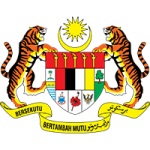 We are pleased to announce that the International Journal of Asia Pacific Studies (IJAPS) has been selected as recipient for Ministry of Higher Education (MOHE)’s Current Research in Malaysia (CREAM) Awards.
We are pleased to announce that the International Journal of Asia Pacific Studies (IJAPS) has been selected as recipient for Ministry of Higher Education (MOHE)’s Current Research in Malaysia (CREAM) Awards.
CREAM is an incentive by MOHE to encourage continued excellence in research and publications, and maintaining visibility in major databases, given to a selected number of academic journals in the country.
In the inaugural award last year, IJAPS was also one of the recipients.
Again, Penerbit Universiti Sains Malaysia (USM Press) and the editorial team are honoured with this recognition.
Growing an Academic Journal: Sharing with University of Chiang Mai
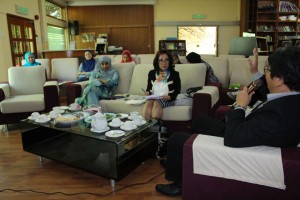 On 19 January 2016, Penerbit Universiti Sains Malaysia (USM Press) and International Journal of Asia Pacific Studies (IJAPS) welcome a visit by Associate Professor Dr. Ploysri Porananond from University of Chiang Mai, Thailand.
On 19 January 2016, Penerbit Universiti Sains Malaysia (USM Press) and International Journal of Asia Pacific Studies (IJAPS) welcome a visit by Associate Professor Dr. Ploysri Porananond from University of Chiang Mai, Thailand.
The purpose of the visit by Assoc. Prof. Porananond was to take a closer look at how journals published by USM Press are managed, particularly IJAPS. The sharing session was held in the Taman Buku (Book Garden), the USM Press’ book showroom.
Professor Ooi Keat Gin, Editor-in-Chief of IJAPS shared his hands-on experience running IJAPS as an e-journal since its inception in 2005. From a modest set up, the journal has undergone a steady phase of growth, and today has become a noticeable presence in the field of scholarly publishing, especially in the humanities field.
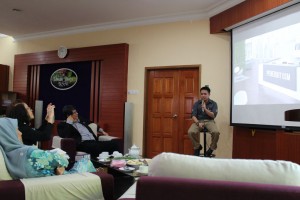 Zulkifli Musa, a Publications Officer who runs IJAPS daily show, also disclosed a number of tips in continually growing a journal through prudent management approach, good engagement with stakeholders (editorial board members, authors, etc.) and application of technology to enhance content visibility and discoverability.
Zulkifli Musa, a Publications Officer who runs IJAPS daily show, also disclosed a number of tips in continually growing a journal through prudent management approach, good engagement with stakeholders (editorial board members, authors, etc.) and application of technology to enhance content visibility and discoverability.
A well-run academic journal is driven by, among others, clear vision and mission, chief editor’s stature, content quality, strength of editorial team and international diversity. A journal wishing to go far must also continually embrace the changing dynamic of the scholarly publishing, adapting to changes through innovation and creativity.
USM Press currently publishes fifteen journals, with more coming under its purview. Four journals are now being indexed in the Web of Science (WoS), and ten are in Scopus.
We thank Assoc. Prof. Dr. Ploysri Porananond for her visit to USM Press.
IJAPS Included in Thomson Reuter’s Emerging Sources Citation Index (ESCI)
Fresh from receiving the Ministry of Higher Education (MoHE)’s Current Research in Malaysia (CREAM) status award, the International Journal of Asia Pacific Studies (IJAPS) is now to be included in Thomson Reuter’s Emerging Sources Citation Index (ESCI).
ESCI is an extended platform established by Thomson Reuters, where journals included in this database continue to be considered for inclusion in Web of ScienceTM (WoS) Core Collection products such as Science Citation Index Expanded™ (SCIE), the Social Sciences Citation Index® (SSCI), and the Arts & Humanities Citation Index® (AHCI).
A journal in ESCI is searchable, discoverable, and citable; authors and researchers get real-time insight into a journal’s citation performance while the content is considered for inclusion in other WoS collections. Journals are selected based on a number of criteria, including journal quality, importance to the academic community, and coverage of emerging scientific fields.
IJAPS is among the first batch of 23 Malaysia-based academic journals that gains acceptance to ESCI.
Three other journals published by Penerbit Universiti Sains Malaysia (USM Press) are also included in the ESCI: Asian Academy of Management Journal, Asian Academy of Management Journal of Accounting and Finance, and Malaysian Journal of Medical Sciences.
IJAPS Bags Inaugural Ministry of Higher Education’s CREAM Award
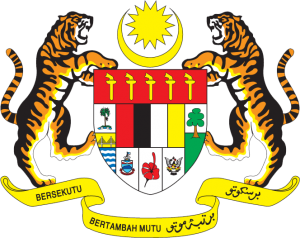 International Journal of Asia Pacific Studies (IJAPS) has been awarded by the Ministry of Higher Education Malaysia with the inaugural Publication Encouragement Scheme under the Current Research in Malaysia (CREAM) status recognition.
International Journal of Asia Pacific Studies (IJAPS) has been awarded by the Ministry of Higher Education Malaysia with the inaugural Publication Encouragement Scheme under the Current Research in Malaysia (CREAM) status recognition.
The award accords recognition to selected Malaysian academic journals to encourage continued excellence in research and publication. IJAPS is one of the three journals indexed in Scopus awarded in the category for Arts, Social Sciences and Humanities.
12 journals from over 130 academic journals published by various publishers across the country are selected as the award recipients.
The award ceremony has been officiated by the Minister of Higher Education Malaysia, Dato’ Seri Idris Jusoh in Aseania Resort, Langkawi, Malaysia, on 3 September 2015, in conjunction with National High Impact Scholarly Publications Workshop.
Penerbit Universiti Sains Malaysia (USM Press) and the editorial team are honoured with this recognition. This is certainly a new milestone which will further spur the team’s commitment in creating impact in scholarly publications.
10th International Conference on Daoist Studies
Daoism: Self, Science, and Society. 10th International Conference on Daoist Studies
Sanyi Tian-An-Tai-Ho Retreat Center, Miaoli, Taiwan, 26-29 May 2016
For the last twelve years, the series of international conferences on Daoist Studies has been instrumental in enhancing the study, application, and awareness of Daoism throughout the world. The only major Daoist conference series, it follows a tradition that began in Boston (2003) and continued through Mt. Qingcheng (2004), Fraueninsel in Bavaria (2006), Hong Kong (2007), Mt. Wudang (2009), Los Angeles (2010), Mt. Nanyue (2011), Ammersee Lake near Munich (2012), and Boston University (2014). Thanks to the generous hosting of the Tiandi jiao community, the 10th International Conference on Daoist Studies will take place in scenic Sanyi / Tian-An-Tai-Ho Retreat Center in central Taiwan.
This year’s conference theme is “Daoism: Self, Science, and Society”. The focus is on issues of Daoist worldview and practice, both in history and today. Panels will discuss Daoist cosmology, philosophy, arts, and practices, with particular concentration on its understanding of body and self, its relationship to science both ancient and modern, as well as its social relevance in ritual and community.
Honorary Chairs:
Li Zi-Yi Honorary President, The Society for the Study of Religious Philosophy (Taiwan)
Tong Guang-Zhao Master Emissary, The T’ienti Teachings (Taiwan)
Lin Qi-Min President, E-Life Mall Corporation (Taiwan)
Chairs:
Liou Tong-Miin, Tsing Hua University (Taiwan)
Livia Kohn, Boston University (USA)
Steering Committee (alphabetical) (temporarily):
Adeline Herrou, An Lun, Chang Lillian, Chao Shin-yi, Chen Xia, Elisabeth Friedrichs, Eric Nelson, Galia Dor, Georges Favraud, Guo Wu, Hsieh Shu-wei, Hsieh Tsung-hui, Ikeda Tomohisa, James Miller, Jia Jinhua, Jiang Sheng, Lai Chitim, Li Gang, Liou Chien-Hui, Liu Chien-Cheng, Lv Xichen, Michael Winn, Patricia Karetzky, Robin R. Wang, Shiga Ichiko, Steve Jackowicz, Susan Huang, Zhang Guangbao, Zhang Jia-Lin.
Keynote Speakers:
Li Feng-mao (National Chengchi University)
TOPIC: TBA
Paul Katz (Academia Sinica)
TOPIC: Daoism and the Revival of Temple Cults in China: Preliminary Observations from Wenzhou
Li Xian-guang (The Society for the Study of Religious Philosophy, Taiwan)
TOPIC: Purposiveness and Non-Purposiveness in Sitting Meditation Practice
Format:
The conference begins at 10 am on Thursday, May 26 with an opening plenary session, followed by the three keynote speeches. It ends at noon on Sunday, May 29 after a closing plenary session. There are twelve sessions total (3 on Thursday, 4 on Friday, 4 on Saturday, and 1 on Sunday), each consisting of three break-out panels, including forums and workshops.
There will be an optional excursion to local scenic spots on Sunday afternoon and various activities each night after dinner. Foreign participants should plan to arrive on Wednesday, May 25, and depart on Monday, May 30.
Break-out Panels:
Three 20-minute or four 16-minute individual paper presentations on the panel theme, followed by the discussant’s 10-minute comments, presenters’ respon-ses, and open discussion (1¾ hours).
Workshops:
Emphasis on practice and experience (1¾ hours).
Forums:
An opportunity to read a particular text with a group of learned scholars. Presenters post their text on the web a month ahead of time for participants to prepare.
Languages:
Conference sessions will be in Chinese and/or English, as specified in the program. All panels will be videotaped and uploaded to the conference website. Presentation abstracts should be submitted in the language of presentation.
Vendors:
If you want to exhibit or sell books, CDs, or other materials at the conference, there is no extra charge, but you have to formally register and pay the conference fee in advance. Space is limited. Register early!
Deadlines:
15 March 2016: registration closes, abstracts for papers due
1 May 2016: conference program e-mailed and posted on the website
Scholarships:
Some scholarships will be provided, covering the conference fee plus room and board, as well as a share of travel expenses. Applicants should be within three years of completing the Ph.D. (before or after). To apply, please send registration information, plus status of Ph.D. and name of advisor, as well as draft abstract of paper to daoconf@gmail.com. Deadline: 1 January 2016.
Click here to register.
